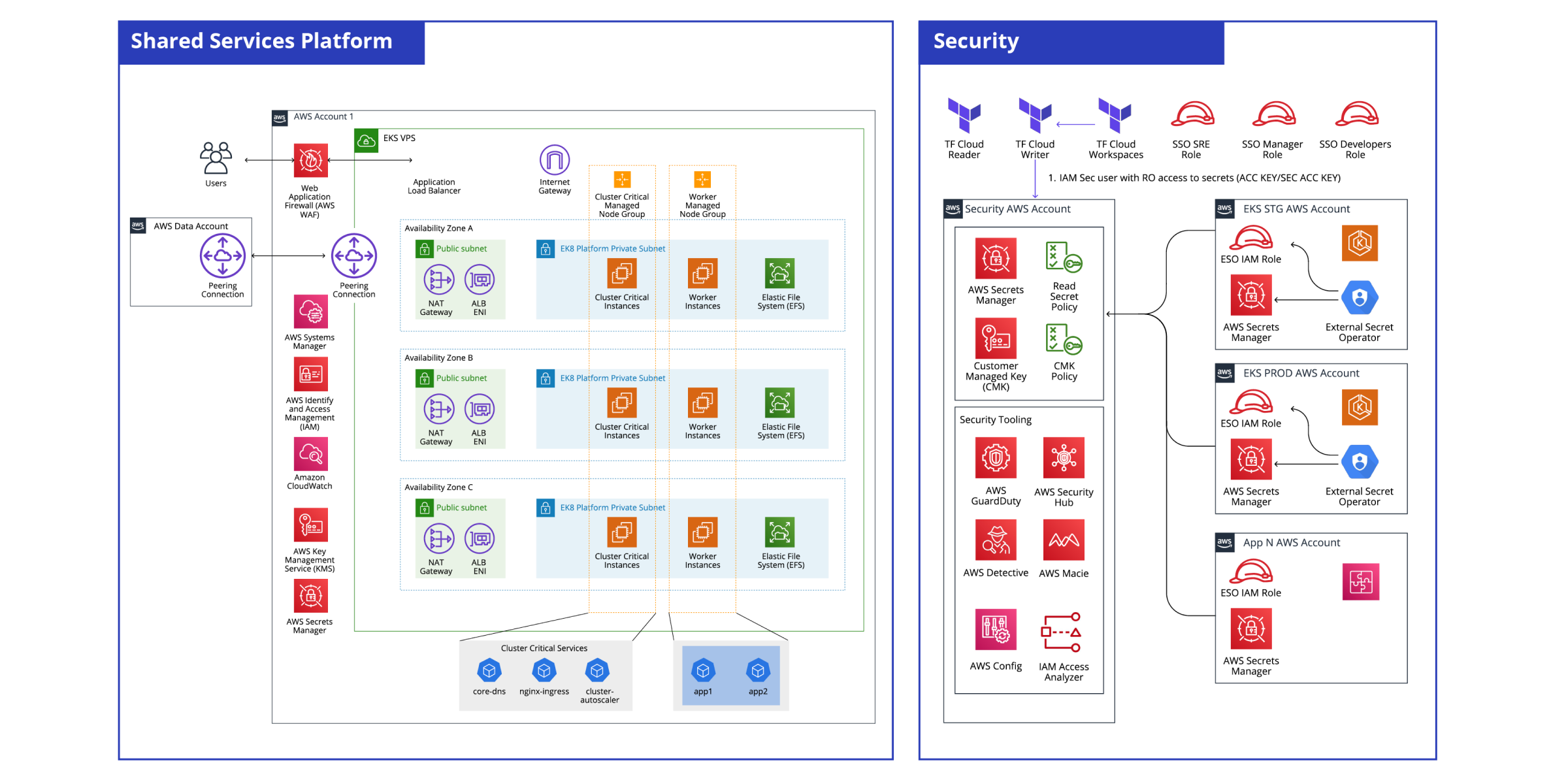Reduced Workload by 30%, Costs by 35%, Security Incidents by 40%, With Container Infrastructure Optimization Through Cloud Migration
Introduction
SoftServe embarked on a transformative journey with a leading U.S.-based provider of fleet management and field service software solutions. Known for its expertise in GPS tracking and telematics, SoftServe’s client looked to modernize its application infrastructure to enhance efficiency and reduce operational costs. The repeatable solution of the SoftServe Adaptive Modernization Platform (SAMP) accelerated the client’s implementation, facilitating the transition to AWS Managed Services, streamlining operations, and bolstering the client’s IT ecosystem.
Challenges
SoftServe’s client faced mounting challenges as its infrastructure needs to be expanded alongside business growth. The organization’s existing user-facing applications were stretched across multiple Kubernetes clusters orchestrated by Rancher running on Amazon EC2 instances. Limited site reliability engineering (SRE) resources made it tedious and costly to manage these clusters. The strategic goal was to migrate to AWS Managed Services (Amazon EKS). This reduces maintenance overhead and enhances operational efficiency.
Inefficient management of operational services, such as Hashicorp Vault for management of sensitive data, further compounded the issues. A modernized approach using AWS native solutions was considered essential.

Solution
To meet the client’s goals, SoftServe initiated a proof-of-concept (PoC) migration using SAMP built on top of Amazon EKS, in conjunction with AWS services like an elastic load balancer in AWS, AWS Secrets Manager, Amazon S3, and AWS Systems Manager Parameter Store. The migration strategy was underpinned by SoftServe’s Container Migration Factory (CMF) framework, which streamlined the transition from Rancher to Amazon EKS.
Key activities included:
- Deployment of SAMP. SAMP was deployed in both development and production environments, aligning with the client’s strategic goal of using managed services.
- Infrastructure optimization. Using Terraform for infrastructure as code (IaC), SoftServe deployed critical infrastructure components, such as VPC peering, IAM roles, and permissions for services and pods (IRSA).
- Security enhancements. The migration plan included transitioning from Hashicorp Vault to AWS Secrets Manager and AWS Systems Manager Parameter Store, ensuring seamless management of sensitive data for running applications.
- Cost management. AWS PoC funding supported the project, optimizing financial efficiency and ensuring a robust return on investment.
Architectures

Value Delivered
The collaboration resulted in the successful deployment of a shared services platform, with the first set of applications migrated within four weeks.
Key benefits realized include:
- Return on investment. SAMP is a truly repeatable solution. It accelerates platform deployment and container adoption. The standard version of SAMP takes 18 minutes to deploy. Further customizations of the platform and configuration adjusted the solution to fit perfectly to client requirements, saving months on platform development.
- Reduced operational effort. The client’s SRE team experienced a significant reduction in the workload required to manage Rancher clusters and Hashicorp Vault components by at least 30%.
- Enhanced security and resiliency. Transitioning to Amazon EKS reduced potential security incidents by 40% and improved overall system resiliency by 50%.
- Cost optimization. By introducing Karpenter as a node provisioner and implementing a multi-architecture setup, the client achieved a 35% cost reduction compared to its previous Rancher setup.
- Financial benefits. Through AWS PoC funding, the client effectively offsets the costs associated with the modernization project.
Through strategic application modernization, SoftServe empowered its client to streamline operations, enhance security, and achieve substantial cost savings, positioning the client for continued success in its industry.
Remove application modernization barriers with cloud migration.


